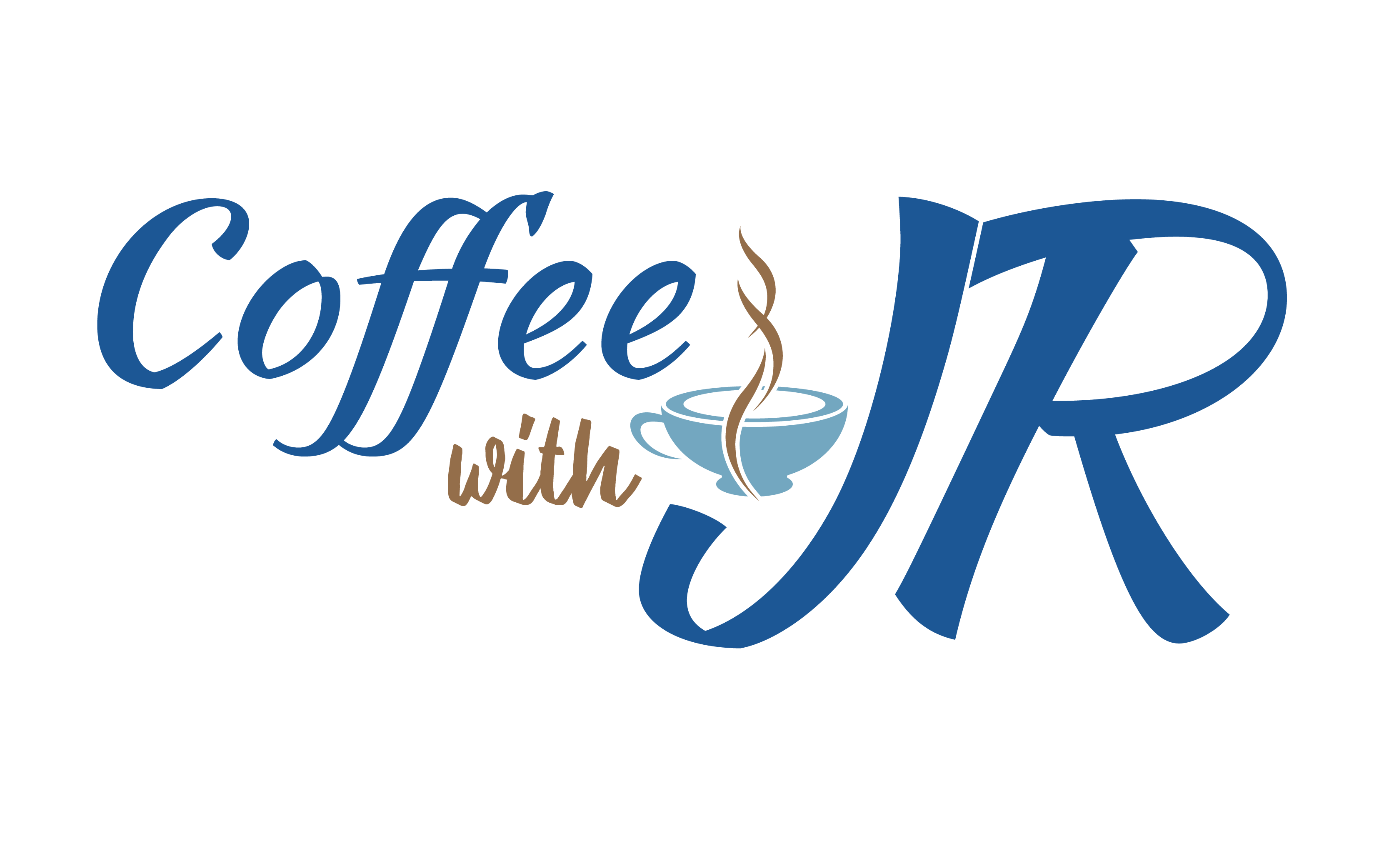BLOG
Insights, Reflections, and Inspirations
Sign Up for JR's Newsletter
Trauma-Informed Care

Trauma-Informed Approach
The last time I ran a team was six years ago. This year, I have the once-in-a-lifetime opportunity to produce and direct the Storytelling Theater for Healing and Social Justice and work with a team of eight amazing individuals. They consist of six actors, one playwright, and a coordinator. The mission of the Storytelling Theater is to normalize mental health conversations within Asian American communities by incorporating theatrical methods as part of mental health workshops. Additionally, the goal is to honor and celebrate Asian American identities and immigrant experiences. We are slated to deliver fifteen performances/workshops in the fall
Now, I am working with a new team using theater to advocate for mental health awareness. I have been asking myself how I can run a team efficiently while fulfilling the contractual obligations and, at the same time, honoring my teammates’ mental health. In other words, how can I do better this time around as the team leader? Looking back, I was an okay manager and leader. This prompted and inspired me to retake and recertify trauma-informed approach (TIA) training so I can better work with my new team.
Why is talking about trauma so important, not only in clinical settings but also in our daily lives? Data have shown that trauma is a risk factor for nearly all mental health and substance use challenges. [i] People can experience trauma through a single incident or a long-term chronic pattern that is either naturally or human-caused. [ii] Examples of traumatic events include:
-
-
- Physical, sexual, and emotional abuse
- Living with a family member with physical or mental health conditions or substance use disorders
- Domestic violence or sexual assault
- Chronic poverty, racism, discrimination, or oppression
- Violence in the community, war, or terrorism
- Living through a natural disaster or other period of distress
-
It’s estimated that 90% of US adults report exposure to at least one traumatic event. American women experience a higher rate of direct interpersonal violence, sexual assault, and physical assault than men. [iii] Thus, not addressing trauma can lead to various mental health and substance use challenges, as well as chronic physical health conditions, including cardiovascular disease and cancer. [iv]
When people experience depressive episodes, uncontrolled anger, or other emotional/mental challenges, it can often be traced back to unaddressed trauma. Trauma is like a wildfire burning through one town after another, spreading throughout generations and affecting the people around them. So, as individuals and as a society, how can we stop the fire from continuing to burn and harm people in its path?
What is a Trauma-Informed Approach?
TIA is a system and tool that creates a safe and courageous space for people around you, including in professional work settings and personal life. There are different variations of definitions for TIA. My favorite one is from SAMHSA. Below is an excerpt from SAMHSA’s Practical Guide for Implementing a Trauma-Informed Approach.
“Incorporating a TIA involves understanding the widespread impact of trauma, recognizing trauma symptoms in both staff and care recipients, avoiding re-traumatization, and supporting paths to recovery. For a program, organization, or system to be trauma-informed, it is not enough to provide trauma-specific interventions. An organization or agency must incorporate trauma-informed principles in its culture, policies, procedures, and practices.
A TIA requires all personnel of an agency, including, but not limited to, administrators, providers, staff, and board members, to recognize that a care recipient’s history of trauma can affect their:
-
-
-
-
- Experience, engagement, and receptiveness to the organization’s services and supports
- Functioning in the community
- Interactions with staff and other clients
- Sensitivity to guidelines and interventions
-
-
-
In addition, organizations need to implement TIA holistically by recognizing that trauma is not unidirectional and that the micro, mezzo, and macro levels of trauma are intricately connected. Finally, organizations need to acknowledge the trauma staff and providers themselves experience, either as part of their own personal lives or secondary to working with clients who share firsthand details about their trauma.”
Here are the principles of TIA:
“Assumptions: 1. Realize the widespread impact of trauma and understand potential paths for recovery. 2. Recognize the signs and reactions of trauma in clients, families, staff, and others involved with the organization. 3. Respond by fully integrating knowledge about trauma into policies, procedures, and practices. 4. Resist re-traumatization
Principles: 1. Safety. 2. Trustworthiness and transparency. 3. Peer support. 4. Collaboration and mutuality. 5. Empowerment, voice, and choice. 6. Cultural, historical, and gender issues.”
-
-
-
-
- Domains of Implementation
- Governance and Leadership
- Training and Workforce Development
- Cross-Sector Collaboration
- Financing
- Physical Environment
- Engagement and Involvement
- Screening, Assessment, and Treatment Services
- Progress Monitoring and Quality Assurance
- Policy
- Evaluation
-
-
-
Insights and Takeaways
This time around, after relearning TIA, here are some of my key insights and takeaways.
• First of all, you do not need to be a clinician or psychologist to teach, practice, and implement TIA in your workplace or personal life. All you need is empathy and TIA training. There are great courses and training programs available on trauma-informed approaches, some of which are even free. (See the end of the blog for a list of free online courses available)
• TIA contains a wealth of information, making it crucial to continue learning about it. One of the instructors from the TIA course I took said this (paraphrasing), “You can never get bored learning TIA because there is always new data and research. People’s lived experiences with mental health and trauma are so diverse that you can’t learn it all. I’ve been teaching TIA for over a decade, and every time, I am still learning new information about TIA.” Therefore, I’ve been encouraging myself to continue reading and learning more about TIA. Just like what the instructor said, every time I take a class or read about TIA, I gain new insights
• Due to a lack of understanding, denial, and political reasons, it’s unfortunate that DEI is receiving this unwarranted negative perception. Once you start learning more about TIA, the connection between hate, discrimination, and mental health trauma becomes more prevalent, evident, and obvious. Once you see the connection, it’s hard to unsee it. For example, people of color who experience hate and discrimination from racism are three times more likely to develop severe depressive and anxiety disorders.
Because of this, I am doubling down on my DEI work. My DEI efforts are not about fostering an ‘us vs. them’ mentality or dictating what people can or cannot say. Instead, I focus on inner growth and healing, which I refer to as ‘Starting from Within.’ Another major component of my DEI work involves supporting individuals who have experienced adversity such as hate and discrimination and providing practical mental health support.
• TIA requires a high level of time commitment. This can be counterintuitive to the fast-paced working culture and the short-term gratification mentality that prevails in our society. We often seek quick solutions, chase after the next exciting and shiny thing, become addicted to the short bursts of endorphin rush from social media, and expect quick fixes or results.
What I am trying to do differently this time around is learn to slow down and be more patient with myself and the people around me. Due to deadlines, scheduling, and my personal anxiety, I often get stuck in the zone of checking off my to-do list and chasing after results. While this is important, I’ve realized that I sometimes prioritize tasks and my job over people’s well-being. So, the questions that I often reflect upon are: “How can I put humans first?” “How can I be more patient?” “How can I take the time to listen to the people around me and the folks that I work with?” “How can I shut up and listen?” “How can I be less judgmental?” and “How can I fulfill my contractual obligations while also honoring my team’s mental health?”
• Self-accountability – I’ve been learning to hold myself accountable to a higher standard. Why is this important? Even though I have been talking and teaching about mental health and DEI for over a decade, I still catch myself making mistakes. Partly it’s because old habits die hard, and secondly, I don’t know everything. Thus, it’s important to continue learning and holding myself accountable. For example, during the process of interviewing actors for the Storytelling Theater, I accidentally said something disrespectful to a candidate. Even though my intention was to make a point while being funny, I offended the candidate. The candidate called me out. Instead of trying to defend myself, I apologized. Did it bruise my ego? Yes! Did I feel ashamed and embarrassed? Of course. I had to remind myself, ‘human-first’.
• This brings us to self-compassion. Oftentimes, we treat ourselves worse than we treat the people around us. It’s a natural human tendency to be hard on ourselves or to feel guilty. We know that constant harsh self-criticism and self-loathing can have a detrimental negative impact on our mental health. In other words, we are re-traumatizing ourselves. It’s going to be very challenging to practice TIA when we are not applying TIA within ourselves. So, the reflections that I have are, “How can I be kinder to myself?” “How can I transform the energy that I put into self-loathing into self-compassion?” and “Who are the people in my life that can give me a positive boost?”
• Lastly, the foundation of building and sustaining self-accountability and self-compassion is a gratitude practice. The power of gratitude lies in its ability to shift our focus away from negative loops in our minds. A simple daily gratitude practice that we can all adopt is to identify three things, people, or experiences and express gratitude towards them. These things can be as trivial as the running water in our homes or as significant as the loved ones in our lives.
In conclusion, embracing a trauma-informed approach (TIA) is not merely a professional endeavor but a personal journey toward empathy, understanding, and healing. As we navigate the complexities of mental health and diversity, it becomes increasingly vital to prioritize human connection, self-awareness, and accountability. By committing to continual learning, practicing self-compassion, and cultivating gratitude, we lay the groundwork for creating supportive environments that foster growth and resilience. Let us remember that our efforts ripple outwards, shaping the collective landscape of compassion and well-being for ourselves and those around us. Together, we can nurture a culture of empathy and empowerment, where every voice is heard, and every person is valued.
TIA Resources
-
-
- Pacific Southwest MHTTC offers various trauma-informed practice training in various fields.
- While refreshing my memory about TIA, I relearned Adverse Childhood Experience which by itself is an extremely important TIA subject that I encourage all of you explore and learn about it. You can take the training here.
- Here is another free online class about ACE.
- Here is the SAMHSA’s Practical Guide for Implementing a Trauma-Informed Approach. A great resource.
-
Citations
- [i] Mental Health First Aid
- [ii] Trauma-Informed Care Implementation Resource Center. (2021). What is trauma? Center for Health Care
- Strategies. https://www.traumainformedcare.chcs.org/what-is-trauma/
- [iii] Substance Abuse and Mental Health Services Administration: Practical Guide for Implementing a Trauma-Informed Approach. SAMHSA Publication No. PEP23-06-05-005. Rockville, MD: National Mental Health and Substance Use Policy Laboratory. Substance Abuse and Mental Health Services Administration, 2023.
- [iv] Substance Abuse and Mental Health Services Administration. (2014). SAMHSA’s concept of trauma and
- guidance for a trauma-informed approach (HHS Publication No. (SMA) 14-4884). https://store.samhsa.
- gov/sites/default/files/d7/priv/sma14-4884.pdf
- [v] https://www.cdc.gov/minorityhealth/racism-disparities/index.html
Photo by Gordon Johnson from Pixabay
Storytelling Theater Ensemble
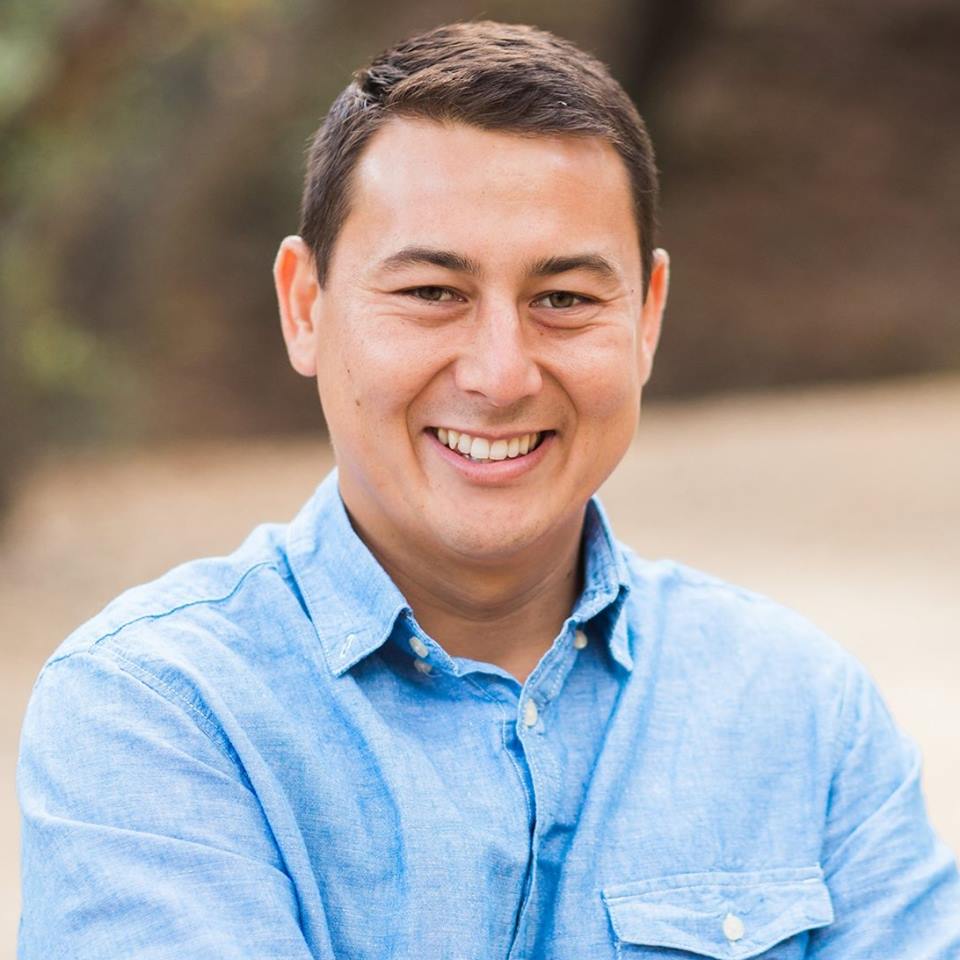
Andrew Nishimoto
Andrew Nishimoto is a dedicated family man with a passion for coaching soccer and making a positive impact. Andrew finds joy in both his personal and professional life with his high school sweetheart and wife of 16 years by his side, along with his two awesome children, Emma and Wesley. When he’s not playing sports or coaching a team, he’s utilizing his expertise as a nonprofit consultant, helping organizations achieve their missions and create meaningful change in the community. Andrew’s commitment to his family, coaching, and philanthropic endeavors reflects his values of teamwork, dedication, and service to others.
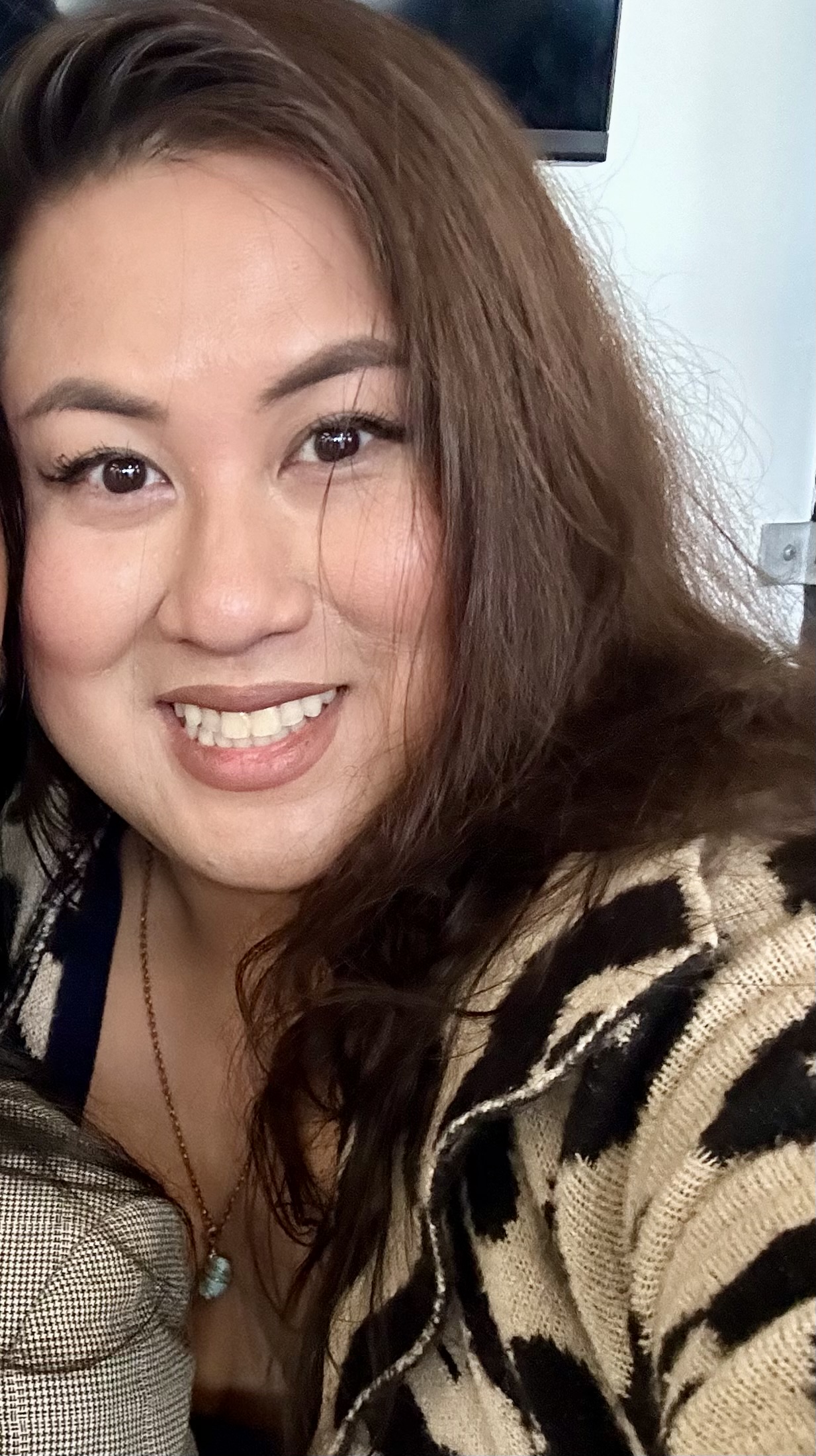
Anya Custodio
Anya Custodio is a 1st generation born Filipino American who was raised in West Covina, CA. She is the eldest child of 4 kids. Anya is part of the LGBTQ community. She comes from an emotionally lacking family structure and has relied heavily on her chosen family for emotional support. Anya enjoys nerdy things such as Pokemon, Anime, D&D, and video games. She is very open-minded and finds anything taboo to be interesting and should be discovered.

Bryan Ha
Bryan is an eccentric, multi-faceted Asian-American performer and storyteller who’s invested and passionate about emboldening the performative space for marginalized communities and unraveling his own artistic expression. He’s excited to be a part of this performance experience as it gravitates toward creating theatre for change. Along with his work in theatre, film, and voice work, he is a member of Visions on the Fly Productions and hosted biweekly improv sessions in SGV parks. He is also a content creator on TikTok and YouTube.

Helen Gu
Helen Gu is a Ph.D. graduate who specializes in diversity research and currently working as an analyst for TikTok. Helen spends most of her time exploring many hobbies including pottery, snowboarding (when the weather permits), and finding ways to engage with her community. It has been a goal of Helen to contribute to the Asian American community in the Los Angeles area. Though Helen does not have prior acting experience, she is hoping to inspire others through her unique story in this process and her efforts will allow others to have a voice in telling theirs.

Julie Khamvongsa
Julie Khamvongsa came to America with her parents and younger sister as Lao refugees. She grew up in Santa Ana, Orange County. She graduated from UCI and worked for several years in television production. She later moved to Los Angeles when she got married. She has 4 beautiful children.

Kimberly Lin
Kimberly works as a small animal veterinarian but also juggles that with her full-time position as a toddler mom. She’s always had a passion for acting and performance arts because it helps her self-expression and gives her a sense of emotional balance. As a survivor of childhood abuse, she is an outspoken mental health advocate who strives to give a voice to the voiceless. Her hobbies include yoga, camping, aerial silks, and cuddling animals.
Why Am I So Stressed?
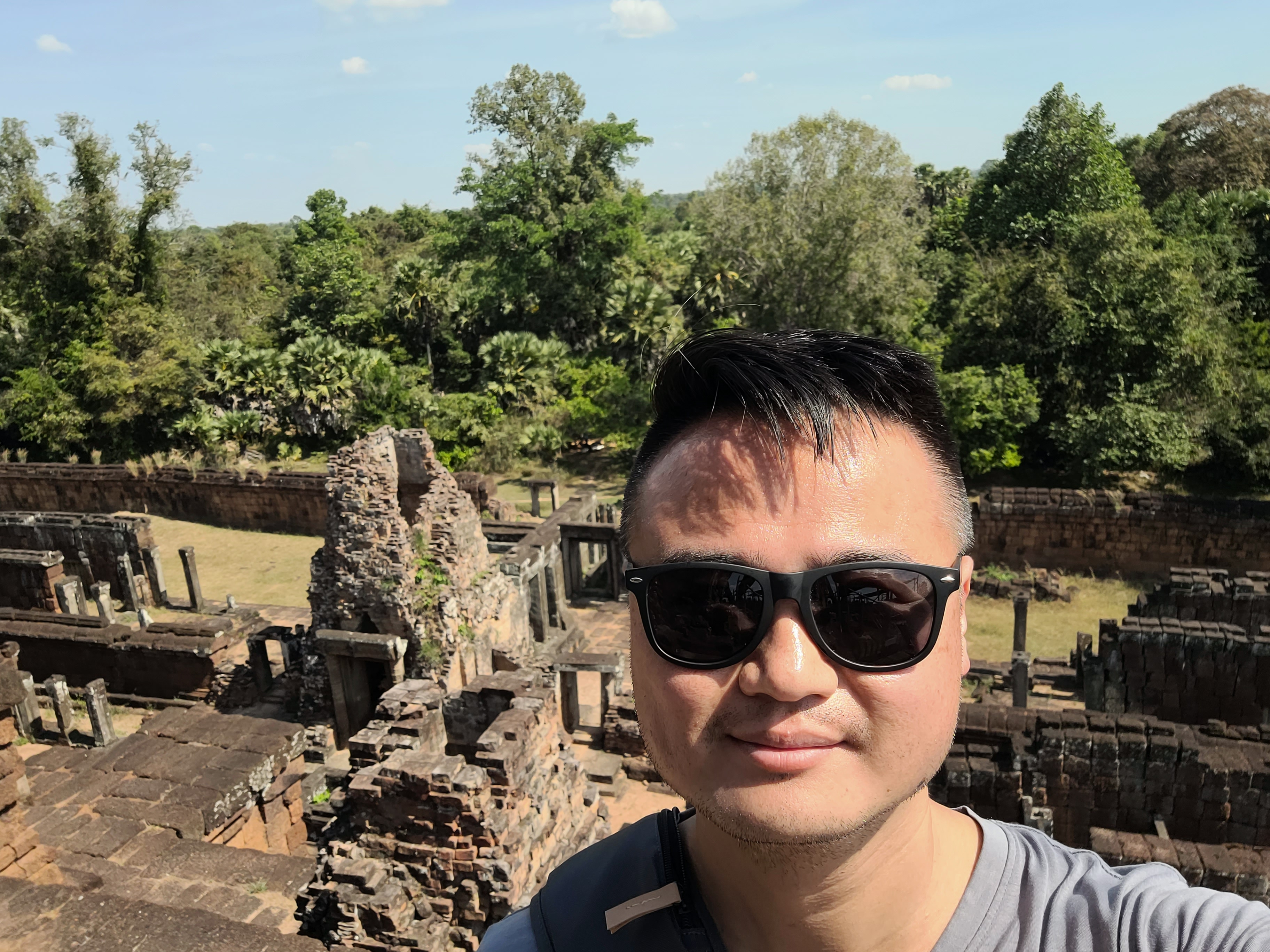
WHY AM I SO STRESSED?
One of the benefits of solo traveling internationally is the ample time to dive into my own thoughts and deeply reflect on my beliefs, my emotions, and my life. The trip to Southeast Asia in January provided me with this unique opportunity.
I had a major awakening about how stressed out I have been in my life. I can still remember sitting on top of a temple ruin in Angkor Wat where the morning cool breeze helped me to get into a meditative state of calmness. In that state of serenity, I was able to reflect objectively on my life over the previous year and see an extremely stressful person. When I came back to the U.S. and tried to get myself back on track, I immediately felt my body start to tense up again and the level of anxiety and stress increased.
According to Dr. Aditi Nerurkar, 70% of people exhibit at least one symptom of burnout, and 72% of individuals are struggling with stress with many stating that the past several years have been the most stressful. [i] Another set of data from the American Institute of Stress reveals that 55% of Americans experience stress throughout the day. Stress causes 57% of Americans to feel paralyzed, while 63% of U.S. workers express readiness to quit their jobs in order to escape work-related stress. Additionally, 94% of workers report experiencing chronic stress due to work. [ii]
So, what is stress? In general, there are two types: acute and chronic. Acute stress (not to be confused with Acute Stress Disorder) can arise in anyone’s life. It often stems from specific events or situations such as traffic jams, arguments with loved ones, job interviews, major deadlines, moving, public speaking, etc. Based on our understanding, humans actually need stress to stimulate our brains and bodies. Thus, acute stress is normal, considered healthy, and highly treatable and manageable.
On the other hand, chronic stress results from repeated exposure to stressors or long-term stressful situations, such as being in a harmful relationship, a toxic work environment, an unsafe living situation, or enduring prolonged physical and/or mental illness. Chronic stress is considered unhealthy because it is prolonged and can lead to more severe and negative physical and psychological impacts. These include an increase in substance usage, headaches, impaired immune systems, insomnia, lack of satisfying personal relationships, absence of meaningful hobbies or interests, self-harm, poor performance at work, feelings of anger or frustration, withdrawal from friends and family, and the development of mood disorders such as depression or anxiety disorders. [iii]
Ultimately, chronic stress depletes a person’s psychological and emotional resources and can physically damage their brains and bodies. [iv] Managing chronic stress is challenging and often requires professional behavioral health treatment and support.
Reflection:
There are many different causes of chronic stress. Frequently, people (including myself) blame work for their stress, which is true to a certain extent. However, the more I learned about myself and my mental health, the more I realized that the causes of my chronic stress were related to a variety of life experiences. So, why was I so stressed?
I thought I was a pretty chill person. I had a variety of daily self-care routines and habits that helped to balance my life. Even though I worked a lot, I was pretty good at balancing my work with breaks, exercise, travel, etc. After plenty of opportunities to reflect while I was solo traveling, I identified some of the main issues and causes of stress:
- Age/Health – I am still relatively young and healthy, but at the same time, I am not getting any younger. My skull is growing more white hair, which is an unwelcome reminder that I am aging. When my body aches from sitting too long or taking longer to recover from a workout, it directly challenges my identity as a strong and independent man. It’s not a pleasant fact or reality to accept. My inability to truly accept that I am aging is creating a lot of internal stress which, in turn, leads to more white hair ☹.
- Lola dog is turning 11 years old this year. She has stage 2 chronic kidney disease. Even though Lola will be around at least for a few more years, the fact that she has an untreatable kidney disease is causing me a lot of stress.
- Career – My identity is closely wrapped around my career. The drive and pressure to succeed can be very rewarding, but at the same time, it can create a lot of stress. Even though I have healthy routines to separate my work from my personal life, psychologically and emotionally, my profession is so intertwined and enmeshed with my identity that I have been experiencing chronic stress for decades.
- Money – Like everyone, I am always concerned about financial stability. Growing up poor has instilled a scarcity mindset and survival mode in me. I also realize that it’s more than just cash; it has a lot to do with uncertainty about my career, profession, the economy, inflation, and the future.
- The Future – I am very concerned about the environment. Also, the current political and social climates of increasing hate toward Asian Americans and marginalized groups of people are creating safety concerns for myself and millions of others. Not feeling safe and a sense of belonging are definitely increasing stress in my life.
- Along the line of concern about the future, another external stressor is the geopolitical situations around the world and the ongoing wars. Hundreds of thousands of people are being slaughtered and starving to death on a regular basis. The potential negative mental health effects and trauma that millions of those children have to endure is negatively impacting their adult lives.
What is different now?
Stress is inevitable in our lives. In fact, it’s part of our DNA and a survival mechanism. The key is to prevent acute stress from becoming chronic stress. Two methods that I am using to avoid unhealthy stress are reframing my mindset and doubling down on my healthy routines and habits.
Reframing my mindset is a form of Cognitive Behavioral Therapy (CBT) that I learned from my therapist. The goal and purpose is to retrain our brain, body, and emotions to handle past trauma, current challenges, and/or overwhelming problems in a more positive way by breaking them down into smaller parts. Here are some of the ways that I am reengaging and reframing my stressors.
Age/Health – Yes, it’s very challenging to accept that I am getting older. I can’t stay up all night partying and then wake up early the next morning for a 10-mile hike. What I can do is to continue to be healthy by taking care of my body and mind. Whenever I feel stressed about seeing my white hair, I remind myself that aging is just another process and phase of life. There are many older adults who are aging gracefully with abundant energy and still going on different fun adventures.
Lola – Just as I slowly accept my aging process, I need to constantly remind myself that Lola’s inevitable death is also part of the cycle of life. It’s normal to feel sad and stressed about it. We have had her for over a decade, which is a huge blessing. She has had an amazing and wonderful life. Her grandma used to give her gourmet meals that were better than my regular food. The majority of the time that I have her, I work from home, so she is rarely home alone. Even when I need to leave, she is able to party at my neighbors’ places. I know that this stress will continue to impact me, but I can use it as an opportunity to appreciate and celebrate Lola’s life by giving her more love and hugs.
Career – I’ve started following a simple yet powerful rule to separate my life from my profession. The rule is that I don’t talk about my work in social settings. In fact, unless people ask me what I do professionally, I don’t even whisper anything resembling my work. Along this line, I try my best to avoid asking people what they do. Just having this small separation has helped me to disconnect from work.
Environment/Wars – Nowadays, we live in a world with information overload. The majority of the information is straight up garbage and propaganda designed to incite unnecessary anger, fear, and stress in our lives. We know that the algorithms used by all major media and social media platforms are designed to keep consumers glued to their phones/platforms/apps so users can be exposed to advertisements (this is how they make money). The easiest way to hook people in is to stir up consumers’ primal instincts and feelings which are anger, sadness, and fear. So, I have been on an information diet. I am not talking about ignoring what’s going on in the world. Instead, I consume less news, especially the information that I know is designed to incite stress and fear in me.
Biologically, our brains simply don’t have the capacity to absorb all of the information that is popping up on our phones. So, even when it comes to healthy information like podcasts and evidence-based books about personal growth, I have slowed down the pace of consuming them, treating them less like entertainment. Instead, I put more attention and effort into digesting the information and learning to incorporate and embody the healthy information into my daily life and routine.
The second method for preventing chronic stress is doubling down on my healthy routines and habits. I continuously improve the quality of my sleep. I’ve tripled my intake of veggies and fruits by consuming at least 30 different types of plant-based foods per week. Unless there is a blizzard or rainstorm, I make sure to spend at least an hour per day outside, away from my workstation. Once I stop working at night or take breaks during the day, I completely stop checking my work emails.
After months of continuously reframing my mindset and committing to sustaining healthy habits, I am able to prevent acute stress from becoming chronic stress. There is a lighter feeling inside me and I am more at ease and content. One of the immediate benefits I notice is my craving for alcohol has decreased tremendously and I naturally drink lesser without any effort.
Anxiety Episode Out From Nowhere
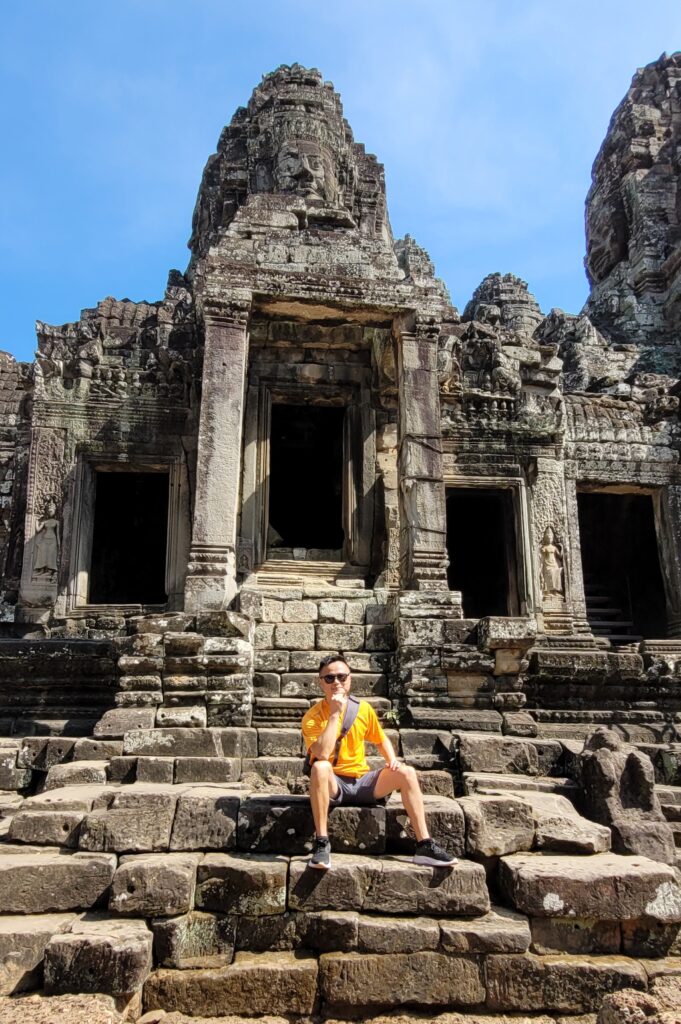
ANXIETY EPISODE WHILE TRAVELING IN VIETNAM
Part 1
I was very blessed to have the opportunity to spend a big chunk of January in Vietnam and Cambodia. Instead of writing about Vietnamese and Cambodian foods and cultures (there are already tons of these blogs out there), I wanted to share about a mental health episode I had halfway into my trip.
After visiting the incredible Angkor Wat in Cambodia, I was back in Vietnam, specifically in the central part of Vietnam at the famous little town called Hoi An. Hoi An is famous for its street lanterns, historical old town, rice fields, canals with basket boats, and access to the ocean and beaches. Originally, I was only planning to stay in Hoi An for four days and I ended up spending eight days there. This change of itinerary was due to experiencing an anxiety episode.



On the second day in Hoi An, late in the afternoon, I was sitting at a street café near the historical bridge by the river drinking a passion fruit smoothie. I was enjoying people-watching and getting lost in my thoughts. Suddenly, this uneasy and unsettled feeling started creeping into and forming in my abdomen; within thirty minutes, the discomfort gradually transformed into feelings of insecurity and instability. My mind was caught off guard and was trying its best to process what was happening. The only thoughts and meanings that my mind could produce were:
-
- “Enough fun and vacation, I need to get back to work.”
- “Two international trips to Asia within three months is a luxury that I don’t deserve. I should call it quits, cut my losses, and get back to work.”
- “If I don’t go back to my hotel and turn on my laptop, I am going to be so behind in my projects and work. I won’t be able to catch up with work.”
- “If I don’t work hard enough, no clients will want to hire me. I will become a failure and broke.”
- “I need to be productive with my life, not just sitting around drinking exotic fruit juice and people-watching.”
- “I need to change my return flight and fly back to the States ASAP.”
These thoughts were so intrusive and strong that I had a minor anxiety/panic attack at the café. The scariest part was that I didn’t know what to do or how to react. My whole body and mind were paralyzed and I started believing all of those thoughts. The more I believed in those thoughts, the more I got sucked into this black void of unsettled, uneasy, and depressed feelings. All I wanted to do was run back to my hotel, pack up my stuff, change my return flight, head to the airport, and fly back to the States.
Part 2
Last year, I wrote a series of blogs about my experiences dealing with anxiety (Is This How I Want to Live, Anxiety? Murphy’s Law, Challenge of Unwinding, and Monkey Mind). One of the challenges I have written about is my experience with anxiety and how our capitalist and working cultures are contributing to unhealthy habits, mindsets, expectations, and stresses in our life.
I am the byproduct of the American overworked culture. Even now, when I work 50 or 60 hours per week, part of me still sees it as a badge of honor.
The overworking mentality and culture exist in many societies and countries. It’s deeply ingrained and shaped by various cultural, economic, and historical factors. One of the factors is the societal admiration for individuals who work long hours and are perceived as dedicated. Success is frequently equated with long hours and unwavering commitment to work. People must sacrifice personal time for professional success; it is very pervasive and acceptable.
Another factor I relate to a lot is job security and economic pressures. Economic structures and job markets in many countries create a sense of competition, pushing people to work longer hours to stand out and secure their positions. In some cases, employees may feel pressured to accept demanding and even unhealthy work conditions due to the scarcity of job opportunities.
One of the factors that I am still struggling with is perceived productivity. There is a misconception that constant work and long hours equate to higher productivity. Taking breaks, practicing self-care, or going on vacation are often seen as unproductive and as a hindrance to achieving professional/career goals. It’s a common practice that people are being busy for the sake of being busy.
There is a fear of perception. For the longest time, vacation, self-care, leaving work early, and getting a good night’s sleep were frowned upon. Individuals and employees feared that they would be judged for taking time off and perceived as lazy, and lacking dedication to their work. Thus many people, especially my generation and older generations, feel guilty for taking PTO or a sick day.
Of course, there is the workplace culture and policies that overtly or covertly, and subtly discourage employees from taking breaks. Even though there is more talk and awareness about self-care and mental health in the workplace, corporate culture often glorifies long working hours and measures dedication by time spent at the office or on the computer. Employees may feel pressured and compelled to conform to these expectations to gain recognition, promotion, or job security.
Lastly, there is the fear of falling behind, a form of FOMO (fear of missing out) that I grapple with. Some employees worry that taking time off will result in falling behind at work, missing out on opportunities, including financial ones, or losing their competitive edge. This fear reinforces the need to be productive, overwork, and discourages self-care or vacation.
Here is an example of the overwork culture manifesting in our daily lives. When we meet a new person, one of the very first questions we ask each other is, “What do you do for work?” Based on my observation, this question is frequently asked in countries that have an overworked culture, including the United States and many Asian countries.
Another example of overwork culture I have seen is people, including tourists like myself, experiencing severe FOMO syndrome. Due to the fear of missing out, I feel compelled to visit all of the Instagram ‘famous’ spots or go on different excursions. Even during vacation, there is the habitual, unconscious pressure to be productive, the need to be constantly busy and be on the go all the time.
So, while I was in one of the most beautiful places in Vietnam, enjoying a passion fruit smoothie, all of the overwork factors listed above crashed into my mind, and my anxiety level skyrocketed. This experience reminded me of my time living in Hawaii after college. Even though I was living in paradise and a five-minute drive from the beach, I rarely visited the beach because I was so stressed out and obsessed with working long hours, building my career, and conforming to my boss’ unrealistic expectations. My time living in Hawaii was one of the most depressing periods in my life.
Part 3:
Throughout my second day in Hoi An, I was in communication with my good friend, Kelly. Kelly, who used to live in Southeast Asia, became my de facto tour guide, helping me plan out my trip and providing travel tips while I was on the go.
As my anxiety kept growing at the café and my mind wouldn’t stop repeating the negative statements, I forced myself to go for a walk. The walk was helpful at first because the intrusive thoughts started dissipating, but the feelings of unsettledness, insecurity, and uneasiness still spread throughout my body. That’s when I decided to openly share with Kelly how I was struggling. Below is the correspondence between us:
Me: “Tell you the truth, part of me just wanted to go back to the States lol. My anxiety about work and current big projects is making me feel unsettled. Part of me wants to chill and relax but I am finding that’s getting harder. The other part of me just wants to work.”
Kelly: “Can you work some remotely?”
Me: “Yes, I have my laptop. But I feel silly to spend all of the money to be here to just work lol.”
Kelly: “So maybe schedule in a couple hours of work each day to help ease the anxiety. Then plan for a little wandering and some relaxing. Hoi An is a great place to be then!”
Me: “True.”
Kelly: “You’re in the business of mental health, I think you’d advise your clients to take care of yourself, and if that means a little work on your trip, then that’s ok.”
The simple question from Kelly, “Can you work remotely?” triggered a positive reminder that I do have the choice, options, capacity, and capability to enjoy a vacation and do some work at the same time if I choose to. Instead of drowning in my anxiety and stress, I needed to take advantage of this privilege.
Through this simple exchange of supportive and reassuring messages, I was able to start calming my anxiety. My rational brain began forming and contributing new and positive thoughts to counter my anxious ones:
-
- “I have choice and options to do whatever I want, including working or not working.”
- “It’s healthy to relax and enjoy life.”
- “I have great clients. They are not going to abandon me just because I am having a vacation.”
- “Yes, I have important tasks that need to be completed and none of these tasks are urgent.”
- “I have a great team back at home and they have my back.”
- “What’s the point of working so hard if I can’t enjoy the outcomes?”
- “I can always walk to a coffee shop down the street and do some work.”
Part 4:
From the onset of my anxiety attack, it took me almost two days to return to my regular baseline. Once my nerves were calmed, I was able to look back at the whole experience and reflect. The most important lesson that I learned from this whole experience is that I am recommitting myself to continuing to free myself from this cycle of anxiety and toxic stress.
Also, part of the stress and anxiety that I was experiencing was the external pressure and expectations of FOMO, feeling the need to visit all the sightseeing spots or go on different excursions. Instead of falling victim to this mentality that I have to be on the go all the time, I doubled down on extending my stay in Hoi An, booked an affordable hotel close to the beach, cleared all of my preplanned schedules, chilled, and learned to follow the flow by listening to what my body and mind wanted to do. In between chilling, when I felt the need to do some work to appease my anxiety, I took my laptop to a local coffee shop.
I want to emphasize that when I decided to forego all of my remaining preplanned itineraries and allow my mind and body to follow the flow, for the first time in a long time, I truly felt relaxed and chilled.

Japan – The Hidden Rules, Food, Cultures
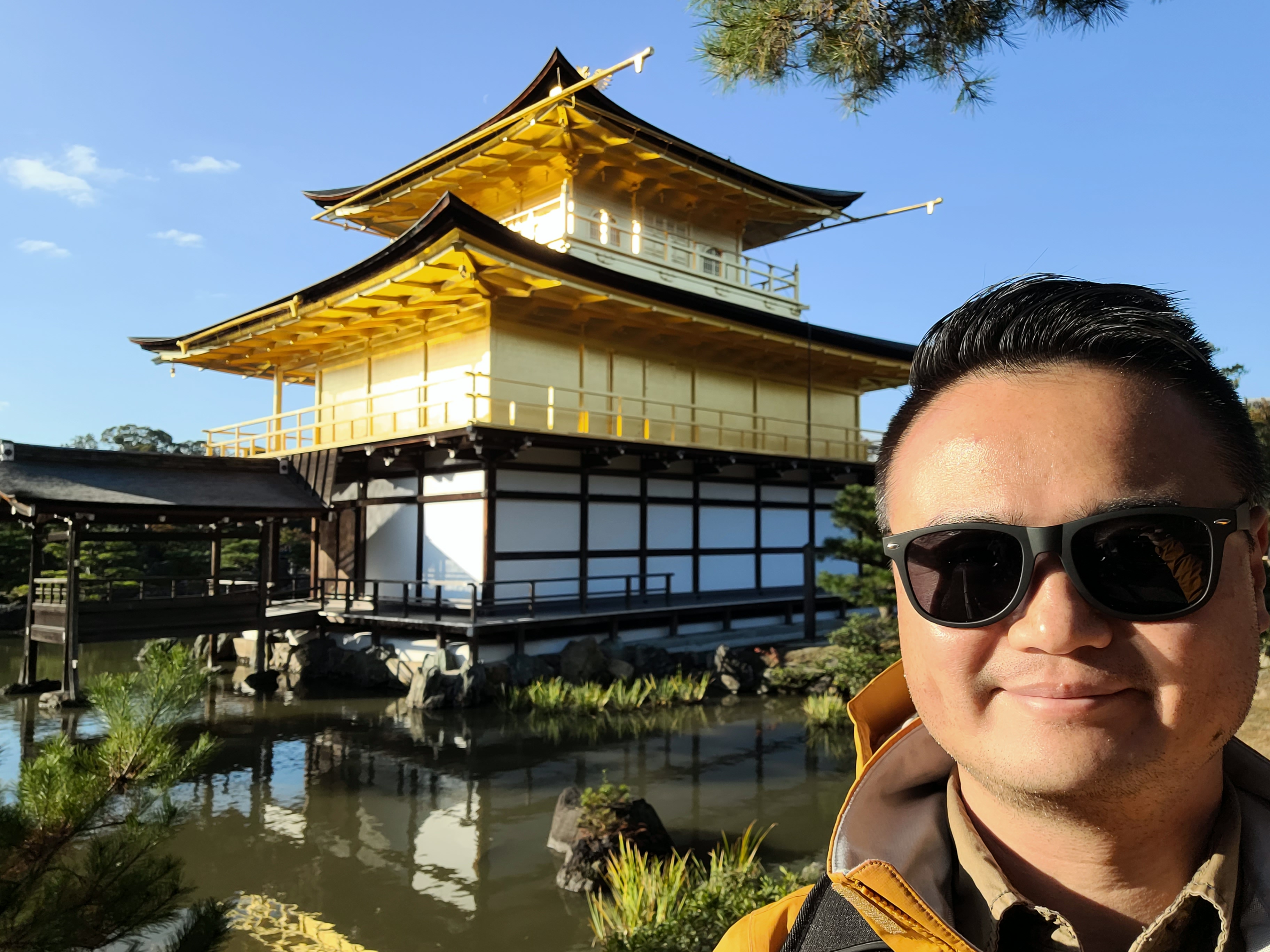
I had the opportunity to spend about two weeks in Japan last month. I was in and out of Tokyo for six days, in Okinawa for four days, and in Kyoto/Osaka for four days.
Japanese culture has had a significant influence on my life. Since I was a young lad, I’ve studied Japanese Zen Buddhism, tea ceremonies, Zen gardens, history, and the arts. I grew up reading and watching Japanese manga and anime. Many people in my life are either Japanese or Japanese American. In other words, I am familiar with Japanese culture. That being said, knowing something well is very different from actually experiencing it. My trip to Japan shattered many of my preconceived notions about Japan and Japanese culture, opening my eyes.
Here are some of the highlights and reflections from my trip.
Hidden Rules
I landed in Tokyo in the late afternoon. After checking into my hotel, I went for a walk in the Ryogoku neighborhood, searching for dinner. I reached a semi-busy cross street that had no cars, but the pedestrian lights were still red. Despite the absence of traffic, everyone was literally standing and waiting for the lights to turn green. As the king of jaywalking, I instinctively started walking across the street. Five steps into my jaywalking, a traffic cop yelled at me and told me to go back to the sidewalk, and a handful of Japanese people also scorned me, too. At that moment, I officially experienced the discipline and rigidity of Japanese cultural norms and etiquette.
When it comes to following rules, Japan is well known for its cultural and social conformity. Oftentimes, many of these rules of manners and behaviors are not obvious; thus, I call them Hidden or Unspoken Rules. Hidden Rules are the unwritten norms that a society follows, but they are not typically voiced or documented.
Every culture and country has its own set of Hidden Rules. I noticed that when I was in Spain, Norway, and Sweden, it was better not to talk about gypsies. Before going to China in 2017, I was told that as a foreigner, I could pretty much do whatever I wanted as long as I didn’t discuss politics, religion, Taiwan, or Tibet, and DON’T criticize the government at all. Countries like Germany and Japan are known for being extremely punctual, unlike some other countries where being late is the norm. In the United States, one of the unspoken rules is not to discuss politics and religion during holiday meals or on your first date.
Some Hidden Rules are obvious, while others are less so. Using tipping culture as an example, many countries don’t tip at all, while tipping is the norm in the United States. So, in general, tipping in the States is an obvious Hidden Rule. That being said, the amount to tip and whom you tip are less obvious. Should you tip 15%, 20%, or 25% at restaurants? We tip pizza delivery people, but we don’t tip UPS, FedEx, or Amazon delivery folks. The amount you tip a bartender might be different from tipping waiting staff or a barber. And, we don’t tip fast food workers.
Not until I was in Japan did I become more attuned to these Hidden Rules. Personally, I am extremely intrigued by all of the Unspoken Rules that different societies have. If I ever go on to pursue a Ph.D., my thesis would be on this topic.
I am intrigued by different Hidden Rules primarily because I love history, I am interested in how collective human behaviors form over time and fascinated by the psychology and mentality behind these behaviors and beliefs. All of these Unspoken Rules didn’t just pop out of nowhere; the majority of them have historical, cultural, and societal reasons and significance behind them. The Hidden Rules manifest on different levels such as political, religious, social, familial, and interpersonal. Some societies and cultures are built in a way that they desperately try to hold onto their Unspoken Rules despite external pressure and influence. On the other hand, some gladly integrate and accept other cultural norms. Like a fish in the water, many times people are so accustomed to their lifestyle and culture that they don’t even realize they are the byproduct of the Hidden Rules.
Another reason I am intrigued by these Unspoken Rules is that, for us to truly build a peaceful and more equitable world, we need to be more attuned to our own Hidden Rules and try our best to learn and understand others’ Unspoken Rules. Even within our own backyard, here in the US each state and region has its own unique cultural norms. The ability to observe, articulate, understand, and accept each other’s Hidden Rules can go a long way in fostering connectivity, compassion, and appreciation for one another.
What are some of the Hidden Rules that you’ve become aware of or those that have heavily influenced your lifestyle?
Food
The food scene in Tokyo is ridiculously abundant with street after street of restaurants next to each other. In Tokyo, you could probably eat every meal out your whole life and still not visit all of the restaurants.
Not once in Japan did I crave or feel like eating Western or American food. One of my favorite things about dining out in Tokyo is the izakaya style of restaurant. These establishments typically have about eight to twenty tables with many seats by the bar facing the kitchen, so you can see the chefs and cooks preparing your dishes.
I like the izakaya style of restaurants because of how efficient they are. I walk into a restaurant, order from a kiosk or just point at a menu item, sit down, and the food shows up in about five to ten minutes. I eat, put the dishes on a return counter, pay, and leave. Unlike in the States where you can request extras or substitute different things for your dishes, in Japan you order exactly what’s on the menu (I think this is another Unspoken Rule). The menu tells you exactly what the price is, including tax. There’s minimal interaction with the restaurant staff. There is no tipping in Japan, so as a consumer, I don’t feel pressure to chitchat with the staff. The process is like eating at an American fast-food joint but with yummier options like different types of ramen, curry, rice bowls, dumplings, sashimi bowls, and/or sushi
The whole time in Japan, I only had one bad meal, and the rest ranged from great to phenomenal. We got really lucky that we were able to eat at a few off-the-beaten-path local restaurants. When we were on Hamahiga Island, a small island outside of Okinawa Island, we ate at Teirabui, an old traditional Okinawa house that’s converted and renovated into a restaurant. Teirabui serves traditional Okinawa soba.


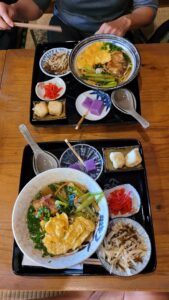
The best restaurant experience was in Kyoto. After visiting the Golden Pavilion of Kinkaku-ji, we just wanted to find a place to eat away from the crowded tourist spots. So, I randomly picked a restaurant that would be convenient for us to return to our hotel. The restaurant is located in the middle of a local neighborhood. We took a taxi and the taxi driver was concerned about us because he thought we were lost. When we went inside the very nice izakaya-style restaurant, the chef also thought we were lost because he told us that after being in business for many years, we were the first tourists ever to visit his restaurant. The food at this establishment was out of this world.

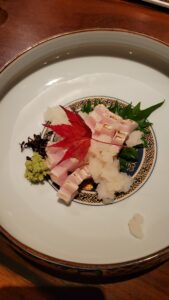


Lastly, what I appreciate the most about dining out in Japan is the portion size and price range. The portions are smaller, but filling enough that you don’t feel bloated after eating. Relatively speaking, the prices are affordable and lower than in the States. For example, a decent-sized bowl of ramen with a side of gyoza is about $7 US dollars. After the meal, I don’t get into a food coma or feel drowsy and can continue my adventure without worrying about not finishing all of the food or carrying the leftovers.
Cultures/Arts/History
My trip to Okinawa led me down a rabbit hole of introspection, inspiring me to delve further into the native history, culture, war, abuse, and tragedy of the Okinawa Island chain, along with Taiwan and its surrounding islands. In a way, I am still reflecting and processing my experience in Okinawa. To start, I highly recommend my readers check out the Okinawa Prefectural Peace Memorial Park website to learn more about the Japanese occupation and the US military involvement on the islands.
Kyoto is simply amazing. Even though everywhere you go it’s crowded with endless tourists, yet it’s still totally worth it. Words and photos just can’t portray and describe the beauty of the different Buddhist temples, gardens, arts, and nature. That being said, take a look at some of my favorite memories, photos, and spots in Kyoto. Enjoy!
Men and Mental Health
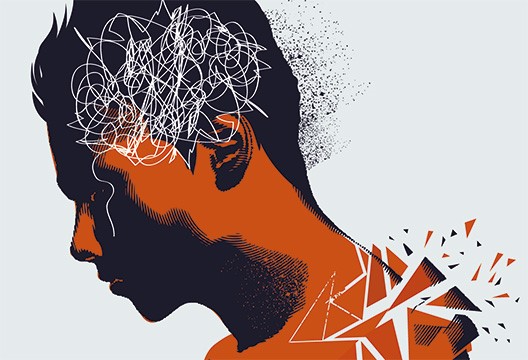
“It takes more courage to reveal insecurities than to hide them, more strength to relate to people than to dominate them, more ‘manhood’ to abide by thought-out principles rather than blind reflex. Toughness is in the soul and spirit, not in muscles and an immature mind.”
– Alex Karras
A few years ago, I wrote an article about “My Asian Male Rage.” Since then, I have presented and facilitated about a dozen workshops and conversations about men and mental health. Here are some of my updated thoughts. *
It seems like in our society it’s acceptable to make various subtle physical, sexist, and discriminatory comments toward men without much consideration. Some of the obvious examples are making fun of men who are short, bald, not hairy enough or too hairy, or not able to grow facial hair.
Unfortunately, the emotional and psychological impacts of these negative comments are often not addressed or acknowledged. The general excuse and expectation is that men are supposed to just “man-up” and act stoic and strong when being made fun of.
Alternatively, due to the perception that men are void of emotions and feelings, it’s considered allowable to put them down. Here are some of the problems that arise with these rationales.
First, whether we like it or not, men are just as emotional as anyone else. Due to centuries of social contract and conditioning, men are groomed not to tap into their feelings and express themselves. Fast forward to our modern-day expectation that men need to be more sensitive and in tune with their partner’s emotional needs, and the world in general. If we don’t acknowledge that men can get hurt from these negative and superficial comments, then how can we expect men to feel comfortable and safe to express themselves?
Second, one of the most common mental health stigmas is the false belief that a person can simply “get over it” or “calm down.” While society continues to expect men to just “man-up” while being victimized by subtle acts of discrimination, how can we encourage men to overcome the mental health stigma of “getting over it?”
Socialized Ideals of Masculinity in the Modern Era
Again, whether we want to admit it or not, gender inequality is still running rampant in our culture and society. Oftentimes, this inequality results from continual individual and societal beliefs and expectations. Some of the common presuppositions and traits that men have about themselves is that they need to be tough, action-oriented, decisive, stoic, self-sufficient, tall and strong, breadwinner, and to have a “hunter” mentality.
Overall, except for the tall and strong traits that are based on individual genetics, there is nothing really inherently wrong with these presuppositions. That being said, when men and society only emphasize mastering these traits without encouraging personal and emotional growth and humility, the problem of toxic masculinity arises. Below are some examples:
- It is totally okay to be tough, but men aren’t allowed to develop emotional sensitivity.
- Being action-oriented is good, but it can lead to over-confidence.
- Being decisive is a strength, but it can also lead to stubbornness.
- Being stoic is valuable for building character, especially during crisis situations, but it can also easily result in excessive substance usage.
- Being self-sufficient is ideal for survival and financial planning, but it can also lead to a fear of being seen as weak and vulnerable if they lose their job.
- Many men love to provide and care for others as breadwinners, but when men go through hard times and can’t be the breadwinners, they often experience shame and embarrassment, thinking they are not manly enough.
- In dating, it’s normal that men have the “hunter” mindset in pursuing the opposite sex. However, this pursuit mentality can lead to aggression, and in some cases, even violence such as sexual assault or abuse.
- Men may associate heterosexism as the norm, leading to homophobic attitudes.
Balancing Act
So, how can men expand and grow their masculine traits in positive directions? Here are my recommendations:
- Toughness means the ability to express oneself and encourage other men to express their emotions and feelings freely.
- While being action-oriented, include other people that you trust in the process.
- Be decisive and assertive, and avoid being cocky or stubborn.
- There is a time for stoicism, but remember that there is also a need for compassion and kindness toward oneself and others.
- Self-sufficient is good for yourself, but remember to check in with your male friends and loved ones to see what they need.
- If you are tall and strong, remember to practice humility.
- It’s awesome that you can be the breadwinner for your family. Just remember to celebrate the financial success of the opposite gender as well.
- If you are single and looking to mingle, nurture your “hunter” mindset with respect for the folks you are attracted to. If you are in a relationship, learn to express your feelings, emotions, vulnerability, and (maybe) your aggressions verbally or through various means, such as hobbies.
- Learn to be secure with your gender identity and sexual orientation, understanding that heterosexism is one of many ways people live.
Feminine and Masculine Energy/Traits
The last thing I want to emphasize is that no matter how manly you are, you have feminine traits in you, and vice versa. All men have some form or level of feminine traits, and all women have some form and level of masculine energy. I think the sooner we can all accept this, the better the world will be.
Men having feminine traits doesn’t make you weak or “girly.” It’s natural. An example I like to use is even Dwayne Johnson (the Rock), the manliest man ever, who lets his daughter put “makeup” on his face and sits on a little pink chair to drink tea with her.

*This blog is about general individuals who identify as heterosexual and male.
Photo from Mental Health Association of East Tennessee website.
Losing Something Precious

LOSING SOMETHING PRECIOUS
“Sometimes we have to lose something precious not necessarily to gain something priceless; sometimes, just losing is priceless.”
– Shahid Hussain Raja
September was a great, interesting, and turbulent month. A lot of things happened as well as disappointments.
The most exciting highlights were:
- I gave a Mental Health First Aid course at Denver Botanic Garden (one of my favorite places in Denver).
- I presented through just keep livin Foundation, a nonprofit committed to empowering high school students by providing them with tools to lead active lives and make healthy choices for a better future. just keep livin was founded by Camila and Matthew McConaughey.
- After eight years of writing and submitting various proposals for an idea that I am passionate about and want to pursue, I finally got the funding approval. I am beyond elated. More information will be shared in next month’s newsletter.
The most challenging thing was Lola has been diagnosed with chronic kidney disease and there is no cure for it. The vet gave Lola about a year or two before her kidneys completely failed and shut down.
This news caught me totally off guard. Lola is ten years old and turning eleven at the end of November. With her high/happy energy and size, I thought Lola would live to be at least fifteen years old or more.
One of my biggest struggles with Lola’s news is that most of my identity is wrapped around her existence. For example, my active lifestyle is closely woven with hers. I walk an average of two miles per day during the warm seasons with her. Going on long walks with Lola is one of my favorite things to do. This includes hiking. I am feeling extremely saddened and scared to lose her.
The news of Lola’s kidney disease overshadowed all of the exciting news and experiences in September. It’s hard for me to be cheerful and celebratory when this inevitable tragedy lingers over my head.
That being said, almost ten years ago I took a very powerful and meaningful mental health training called Wellness Recovery Action Plan (WRAP). According to their website, WRAP is “a simple and powerful process for creating the life and wellness you want. With WRAP, you can:
- Discover simple, safe, and effective tools to create and maintain wellness
- Develop a daily plan to stay on track with your life and wellness goals
- Identify what throws you off track and develop a plan to keep moving forward
- Gain support and stay in control even in a crisis
The WRAP process supports you to identify the tools that keep you well and create action plans to put them into practice in your everyday life. All along the way, WRAP helps you incorporate key recovery concepts and wellness tools into your plans and your life.”
During the WRAP training, I built my crisis plan and personal plan for prevention and recovery around Lola while working on the “identify what throws you off track and develop a plan to keep moving forward” and “gain support and stay in control even in a crisis” portion and exercises.
Fast forward to the present time. When I noticed that I was on a negative, depressive downward spiral because of Lola’s kidney disease, I returned to my WRAP workbook to review what I had already planned for myself during this crisis situation, and how I could prevent myself from falling further into a dark pit. Here are the top five actions that I identified:
- Go to happy hour.
- Take Lola out to her favorite parks/places every day.
- Continue my workout routine.
- Make sure that I get enough sleep.
- Plan and save up to go to Bora Bora.
Looking back on my list, I chuckled at the first action. I would be delighted to oblige to the happy hour command 😊.
Lola’s death is unavoidable, and I know it will cause severe mental and emotional turmoil within me. The “me” from 10 years ago was wise to choose Bora Bora as an escape and healing route. And, this is exactly what I plan to do now. I am going to start saving up and making plans so when the inevitable happens, I will pump some irons first, get some happy hour afterward, have a good night’s sleep, and fly out to Bora Bora.
Photo: Lola and her BFF Molko (the golden lab) and Meadow (the mud).
*I am not getting paid to say this, nor am I an instructor for WRAP. Whether you are experiencing a mental health challenge or not, I believe everyone needs to take WRAP. It can be a life-changing experience for you. I highly recommend it…
Avoidance

AVOIDANCE
Lately, the word “avoidance” has been popping into my life to the point that I can no longer afford to avoid addressing avoidance.
It all started when my friend recommended a podcast interview with Dr. Luana Marques by Mel Robbins. This is what Dr. Marques said which resonates with me a lot, “Avoidance is what we do… if we walk away from things that are meaningful, then we are robbing ourselves of the best lives.” Avoidance is like a “mental jail” that we put ourselves in.[i]
From a mental health perspective, we know that avoidance is a common safety behavior and coping mechanism for people with anxiety. Furthermore, we understand that frequent avoidance can increase anxiety levels and have a negative impact on people’s ability to function in their daily lives. [ii]
Dr. Marques provides an example: when a person experiences panic attacks related to going to work or while at work, their brain may suggest that work is causing the panic attacks, leading them to stay home. This response seems logical. However, in reality, the person is conditioning their brain to associate work with panic attacks. In other words, they are allowing anxiety to become larger than themselves.
In the past, some of the educational institutions where I have spoken criticized certain aspects of my content as being too triggering for students. I fully understand and support the intention of safeguarding students’ well-being, especially those from marginalized backgrounds. That said, individuals who have attended my workshops in the past can attest that my mental health and DEI (Diversity, Equity, and Inclusion) content is relatively straightforward and mild. If students find my training too challenging, I wonder how they will respond and adapt to the higher-stress environments they may encounter in their future workplaces, or to life in general. I’m not suggesting that we should neglect students’ well-being. Instead, we should find a balance between encouraging and providing opportunities for students to develop the strength and courage to engage in uncomfortable conversations about important issues, versus excessively shielding them and encouraging avoidance of anything that makes them uncomfortable.
The more I reflect on avoidance, the more I see it everywhere in my life and in the lives of others. Avoidance is highly prevalent because it’s incredibly easy for us to choose the path of opting out and not trying. We engage in it frequently, often rationalizing our decisions or giving in to our emotional fears and anxieties. Ultimately, it boils down to our instinctual fight or flight response. *
Avoidance manifests in two common forms. The first form involves denying or shying away from certain tasks, actions, goals, conversations, relationships, and more. This typically happens because we are either scared of them or oblivious to their importance. For example, we often tell ourselves, “I can’t..,” “I won’t be able to..,” “I wish I could..,” “I could only do that if I had the time or money..,” “What’s the point..,” “I will do it if/when I get a raise,” and many other self-deceptive sayings.
The other form of avoidance can be described as “escaping.” This involves retreating into our comfort zones and pretending that everything is okay. A friend of mine, Ivana, provides a compelling example. She has observed that some of her friends are deeply involved in yoga and meditation, spending hours on these activities. While these pursuits are healthier than certain unhealthy habits like excessive drinking, Ivana has noticed that some of her friends are using yoga and meditation as a means to escape from confronting the real challenges and issues in their lives and relationships.
So, how can we identify the things that we are avoiding, reframe them, and overcome avoidance? The first step is to recognize them. So, I’ve listed the top four things that I have been avoiding in my life.
- My Business: Rationally, I know what I need to do to scale up and achieve my next level of professional goals and dreams. However, due to fear and uncertainty, I’ve avoided seizing any chance or opportunity. Instead, I escape into my comfort zone by pacifying my ambition. I’ve been consciously and unconsciously telling myself that my work is impactful enough, and I have a good enough lifestyle, so I don’t need any advancement. These are truths in their own right, but in doing so, I’ve stifled my creativity and handcuffed my passion.
- Therapy: Since my therapist of nine years, Dr. Strober, passed away, I’ve been avoiding seeking out a new therapist. I justify it by telling myself that I’m “too busy,” “okay enough,” and that I’m “uncertain if any therapist can replace Dr. Strober.”
- Relationship: I’ve refrained from dating for many years, using excuses such as “I’m too busy building my business,” “I have trust issues,” “I don’t have time,” and “It’s too much work to meet new people nowadays.”
- Dancing: I’ve always wanted to become better at dancing, but due to shame and body-image issues, I’ve been afraid of dancing, even when alone.
Because of my avoidance of these four things, I am walking away from having a more meaningful career and robbing myself of the best life that I might have.
The most effective way to conquer avoidance is by reframing our fears and anxieties. The technique for this involves understanding the underlying reasons and causes behind both rational and irrational emotional reactions. I’m grateful for the nine years of therapy I had with Dr. Strober; it has made it somewhat easier for me to “psychoanalyze” myself and trace the root causes of my fears and anxiety.
Once I confront my fears and anxiety directly, I gain the strength to bring them to the forefront of my consciousness and to “label” them. By giving them a name, my fears and anxieties still exist in my mind and body rent-free, but they no longer have the same power to frighten me.
So for now, I have already scheduled my very first therapy session with a new psychologist in September. I’ve started telling my friends that I am ready to start dating again. I’ve reengaged with a couple of business partnership opportunities that I believe can help me to reach the next professional level.
Final thought: We can either be right and allow our avoidance to dictate our decisions or we can strive to live the most fulfilling life.
*The avoidance that I am referring to in this blog speaks to things that people typically want or are interested in, not extreme cases.
[i] Dr. Luana Marques by Mel Robbins
Photo by vonvix on Unsplash
Monkey Mind

“It takes more courage to reveal insecurities than to hide them, more strength to relate to people than to dominate them, more ‘manhood’ to abide by thought-out principles rather than blind reflex. Toughness is in the soul and spirit, not in muscles and an immature mind.”
– Alex Karras
A few years ago, I wrote an article about “My Asian Male Rage.” Since then, I have presented and facilitated about a dozen workshops and conversations about men and mental health. Here are some of my updated thoughts. *
It seems like in our society it’s acceptable to make various subtle physical, sexist, and discriminatory comments toward men without much consideration. Some of the obvious examples are making fun of men who are short, bald, not hairy enough or too hairy, or not able to grow facial hair.
Unfortunately, the emotional and psychological impacts of these negative comments are often not addressed or acknowledged. The general excuse and expectation is that men are supposed to just “man-up” and act stoic and strong when being made fun of.
Alternatively, due to the perception that men are void of emotions and feelings, it’s considered allowable to put them down. Here are some of the problems that arise with these rationales.
First, whether we like it or not, men are just as emotional as anyone else. Due to centuries of social contract and conditioning, men are groomed not to tap into their feelings and express themselves. Fast forward to our modern-day expectation that men need to be more sensitive and in tune with their partner’s emotional needs, and the world in general. If we don’t acknowledge that men can get hurt from these negative and superficial comments, then how can we expect men to feel comfortable and safe to express themselves?
Second, one of the most common mental health stigmas is the false belief that a person can simply “get over it” or “calm down.” While society continues to expect men to just “man-up” while being victimized by subtle acts of discrimination, how can we encourage men to overcome the mental health stigma of “getting over it?”
Socialized Ideals of Masculinity in the Modern Era
Again, whether we want to admit it or not, gender inequality is still running rampant in our culture and society. Oftentimes, this inequality results from continual individual and societal beliefs and expectations. Some of the common presuppositions and traits that men have about themselves is that they need to be tough, action-oriented, decisive, stoic, self-sufficient, tall and strong, breadwinner, and to have a “hunter” mentality.
Overall, except for the tall and strong traits that are based on individual genetics, there is nothing really inherently wrong with these presuppositions. That being said, when men and society only emphasize mastering these traits without encouraging personal and emotional growth and humility, the problem of toxic masculinity arises. Below are some examples:
- It is totally okay to be tough, but men aren’t allowed to develop emotional sensitivity.
- Being action-oriented is good, but it can lead to over-confidence.
- Being decisive is a strength, but it can also lead to stubbornness.
- Being stoic is valuable for building character, especially during crisis situations, but it can also easily result in excessive substance usage.
- Being self-sufficient is ideal for survival and financial planning, but it can also lead to a fear of being seen as weak and vulnerable if they lose their job.
- Many men love to provide and care for others as breadwinners, but when men go through hard times and can’t be the breadwinners, they often experience shame and embarrassment, thinking they are not manly enough.
- In dating, it’s normal that men have the “hunter” mindset in pursuing the opposite sex. However, this pursuit mentality can lead to aggression, and in some cases, even violence such as sexual assault or abuse.
- Men may associate heterosexism as the norm, leading to homophobic attitudes.
Balancing Act
So, how can men expand and grow their masculine traits in positive directions? Here are my recommendations:
- Toughness means the ability to express oneself and encourage other men to express their emotions and feelings freely.
- While being action-oriented, include other people that you trust in the process.
- Be decisive and assertive, and avoid being cocky or stubborn.
- There is a time for stoicism, but remember that there is also a need for compassion and kindness toward oneself and others.
- Self-sufficient is good for yourself, but remember to check in with your male friends and loved ones to see what they need.
- If you are tall and strong, remember to practice humility.
- It’s awesome that you can be the breadwinner for your family. Just remember to celebrate the financial success of the opposite gender as well.
- If you are single and looking to mingle, nurture your “hunter” mindset with respect for the folks you are attracted to. If you are in a relationship, learn to express your feelings, emotions, vulnerability, and (maybe) your aggressions verbally or through various means, such as hobbies.
- Learn to be secure with your gender identity and sexual orientation, understanding that heterosexism is one of many ways people live.
Feminine and Masculine Energy/Traits
The last thing I want to emphasize is that no matter how manly you are, you have feminine traits in you, and vice versa. All men have some form or level of feminine traits, and all women have some form and level of masculine energy. I think the sooner we can all accept this, the better the world will be.
Men having feminine traits doesn’t make you weak or “girly.” It’s natural. An example I like to use is even Dwayne Johnson (the Rock), the manliest man ever, who lets his daughter put “makeup” on his face and sits on a little pink chair to drink tea with her.

*This blog is about general individuals who identify as heterosexual and male.
Photo from Mental Health Association of East Tennessee website.
Challenge of Unwinding

“I remember my grandfather telling me how each of us must live with a full measure of loneliness that is inescapable, and we must not destroy ourselves with our passion to escape the aloneness.”
— Jim Harrison
For the past several years, I have been fortunate enough to travel abroad during the last week of June and the first week of July. One of the reasons I prefer to travel during this time of year is that I no longer enjoy the 4th of July celebration. Don’t get me wrong, I love the U.S. and I am proud to be a citizen. That being said, I often joke that “I love America, but I can’t stand ‘Merica anymore.”
This year, because of two important work-related contracts, I couldn’t take the trip. The deadlines for both contracts fell in the first week of July and I thought I had to work over the July 4th weekend. However, I was quite productive and I completed all the deliverables for both contracts weeks ahead of schedule.
That should have been great news, something to be proud and happy about. But when I realized that my other major projects wouldn’t start until August and I had no plans for the next three weeks, I started getting stressed out, experiencing a low-key panic attack. A friend made fun of me, saying that I am a victim of my efficiency.
For the past four months, I have immersed myself in a fast-paced work mode. Suddenly, I found myself sitting at home, bored out of my mind. Being bored wasn’t all that bad, but the worst part was that I couldn’t unwind and relax. My brain and emotional state were stuck in work mode, and I couldn’t escape from it. How bad did it get? I started cleaning and reorganizing my place for no apparent reason (I’m not a messy person, but I hate doing housework).
Looking back, I noticed this wasn’t the first time I’d become stuck in limbo with this dilemma, and since I had the time and was bored out of my wits, I decided to dissect this psychological and mental health pattern of mine. Like many emotional and mental health challenges, there were different levels and components.
First and foremost, like many men and business owners, my identity is associated and wrapped around my work and profession. My identity as an educator and professional speaker often supersedes my Asian/Taiwanese American identity. Almost everything in my current life is built around my work. I work whenever I can and whenever I am bored. The underlying fear is that if I don’t have my work, then who am I?
Another level of my work identity is the need to “hunt” and be productive. Maybe due to the millennium of evolution and as a byproduct of being a male, I always feel compelled to pursue the next project and beat the next task. This process rejuvenates my life, gives me a thrill, keeps me psychologically and emotionally occupied, and provides some form of meaning and purpose to my life despite the many challenges and uncertainties that come with it.
The second cause is my good old buddy, Anxiety. I have written about this before in my blog post called “Is This How I Want to Live, Anxiety?” The combination of expectations and pressure from the “hustle culture” and always overworking, and an immigrant survivalist mindset that I have to work harder, be productive and prove myself, to build up my safety net, can be mentally and emotionally challenging when I try to take a break. Even when I know I need to take a breather, my anxiety often prohibits me from slowing down.
The third cause is regret. My mind keeps telling me that I should have booked that flight to Scotland or Amsterdam and now I am “stuck” here. YOLO, so I should NOT have played it safe. A lot of “should haves” flying around in my head.
The last challenge is unwinding, which can result in the inability to shift gears and adapt. According to a study by Scott Schieman of the University of Toronto in the Harvard Business Review, 50% of people bring their work home with them. This means that many people have a hard time unwinding from work on a daily basis. Another example I’ve observed is that many people either bring their work laptop/phone on their vacation or plan to do some work while on vacation. Based on my friends’ experiences and my own, once we arrive at our vacation destination, on average it takes about two to three days to fully decouple from work. In all the trips I have taken, I have found myself still answering emails on the day of travel and during the first two days of vacation.
This shows that it can be extremely challenging for people to shift gears mentally and emotionally. The main reason is that it’s hard to let go of things. Old habits die hard. Most people are creatures of habit and routines. Whether it’s work, or something we love or hate doing, once we start doing them repeatedly, we get used to them and find some “comfort” in them. Breaking away means letting go of something familiar and embracing something foreign. And this can be uncomfortable and scary, even if it’s something like a vacation or engaging in new activities that are good for your health and mental well-being.
Solutions
With a better understanding of my challenges, I started working on healing myself and transforming some of these challenges.
First, I love my job and I am proud of my work and professional identity. At the same time, I really need to put more effort into decoupling my identity from my profession, or at least setting some boundaries. At this moment, I don’t know exactly how I can do this yet. Two decades of living in survival mode have caused me to neglect my hobbies. Maybe it’s time for me to rediscover my hobbies and find other interests that I can pursue.
Second, to tackle my anxiety, I have to practice what I preach. In my blog post “Is This How I Want to Live, Anxiety?” I outlined six steps to “chill the fuck out” and calm my anxiety:
- Observe my anxiety and build a deeper awareness of it.
- Reflect and try to understand the causes of my anxiety. Instead of being ashamed, fearful, and hating my anxiety, I learn to appreciate it because it is one of my survival skills and has been keeping me alive.
- Slowly learn to be comfortable with my fear and anxiety, even though it can be unpleasant.
- Acknowledge and recognize that my anxiety is and will always be here.
- Build the capacity to coexist with my anxiety, so I will be able to gradually manage it by replacing or transforming it with other more positive emotions and feelings.
- Repeat steps 1 to 5 over and over again.
I noticed that the best time to practice these six steps is when I’m out hiking or going on a long walk. During these hikes and walks, I intentionally don’t listen to any music or podcasts. I simply try to be one with myself. Yes, it can be challenging and lonely. But once I become comfortable with myself, I feel incredible and free.
Third, to deal with my regrets, I need to remind myself to stop comparing Scotland and Colorado. We know that too much comparison can lead to low self-esteem, which results in frustration with oneself for not being good enough.
Along these lines, my friend Ivana Polonijo encouraged me to ask myself these questions: “Why am I beating myself up?” and “What is the purpose of beating myself up?” Upon reflecting on these questions, I realized that I have been putting unnecessary pressure on myself. So, I’ve decided to let go of this comparison mentality by reframing the narrative in my head.
I tell myself that while Scotland sounds amazing, Colorado is beautiful during the summertime, too. Even though I have done a lot of adventuring in Colorado, such as hiking many different mountains and visiting mountain towns, there are still many other new things I haven’t tried yet. I need to stop making excuses in my head, such as whether it’s too crowded, too much work, and whether it will be worth my time. Instead, I need to tap into my curiosity again and wonder about the new possibilities and opportunities that I can experience.
Lastly, I remembered a conversation I had with my friend Joe Towne a couple of years ago about unwinding. Joe is a professional actor who has been on TV shows and movies. We talked about the amazing rush of performing on the stage or in front of a camera, and the emotional crash that follows when the show ends, especially if you’re driving home alone. Joe told me that it has taken him many years of intentional practice to learn to cope with the downward spiral and to prevent himself from going from a high-high to a low-low.
Just like any healthy behavior, we need to learn to unwind and relax. For certain people, and speaking for myself, due to past trauma, it can be challenging to lighten up. Thus, the ability to completely chill out does not come naturally. Again, this is something that I am still learning.
One thing I know for sure is that everyone relaxes differently, and the time it takes to unwind varies. Instead of trying to force myself to loosen up, sometimes I just need to allow my body, emotions, and mind to go through this weird limbo state of transition while I reach an equilibrium. It’s like hiking – we have to climb up the steep slopes and break a sweat to enjoy nature and the views from the top.
By implementing these solutions and continuing to work on them, I hope to break free from the work mode and find a balance that allows me to unwind and relax while still maintaining my productivity and professional identity. It’s a journey, but one that I’m committed to undertaking for the sake of my mental health and overall well-being.
Image by 愚木混株 Cdd20 from Pixabay
#mentalhealth #stigma #empowerment #diversity #inclusion #diversityandinclusion #DEI #firstaid #wellness #mentalwellness #hope #recovery #resilience #selfdevelopment #therapy #psychology #health #wellbeing #strengthbased #strength #personbased #personcentered #peer #depression #anxiety #suicide #suicideprevention #prevention #intervention #treatment #signs #symptoms #panicattack #trauma #traumaticevents #intergenerational #conflict #culturalcompetency #minorityheatlh #culturalappreciation #data #mentalhealthintheworkplace
